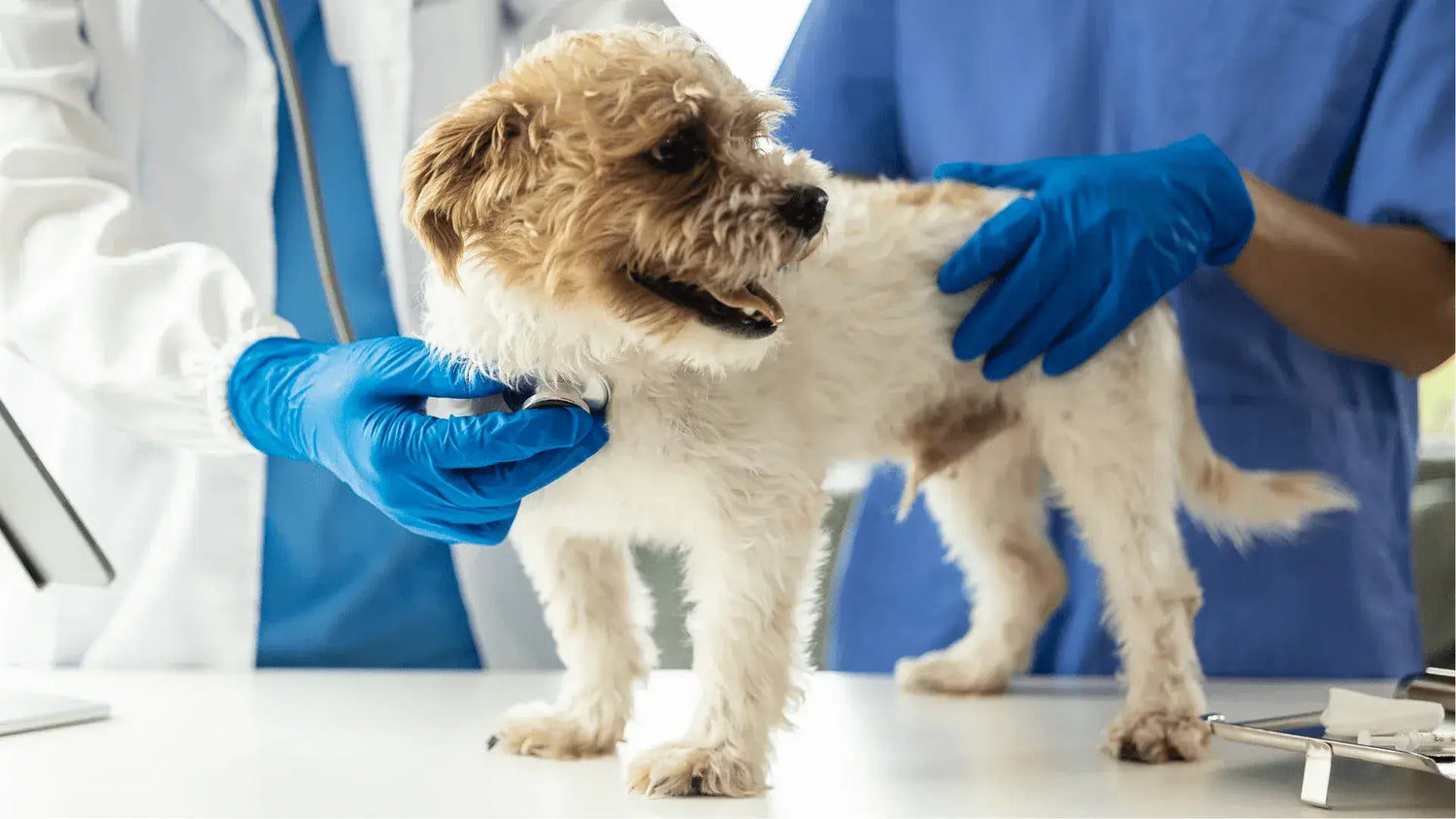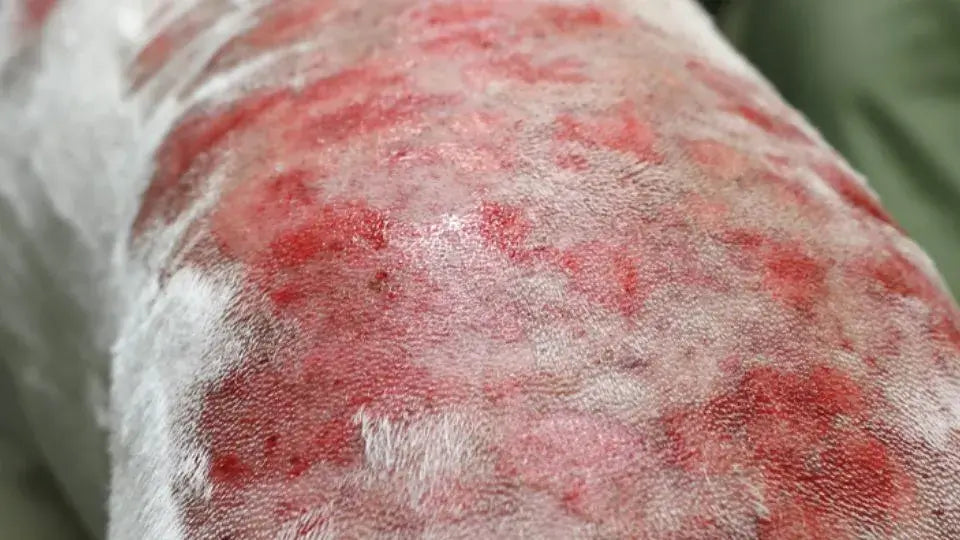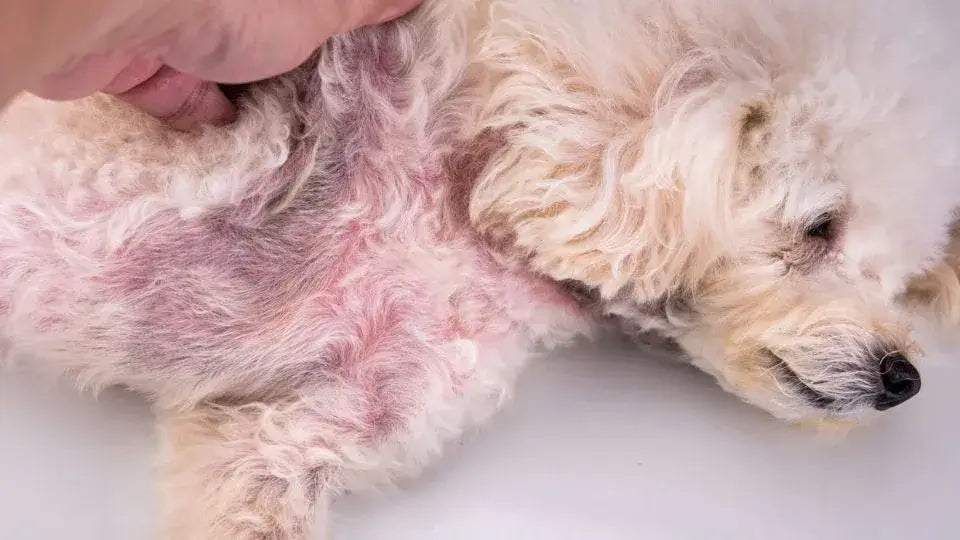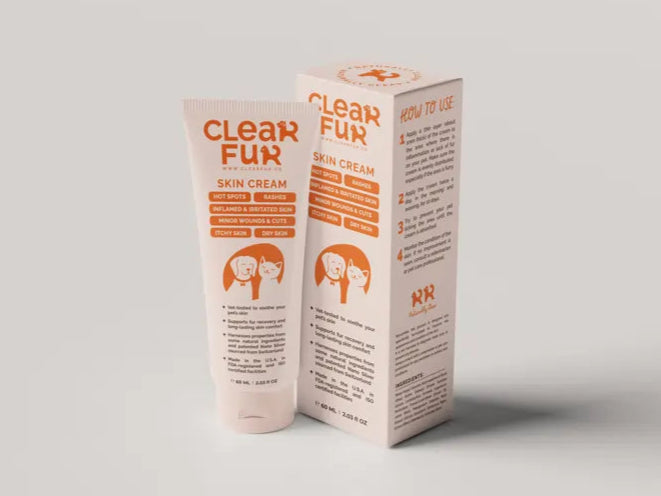Introduction
As pet parents, seeing our furry companions in discomfort is heartbreaking. When dogs develop hot spots—red, inflamed patches of skin that cause itching, pain, and distress—it can be overwhelming. Hot spots, also known as acute moist dermatitis, are common skin issues that occur when a dog's skin becomes inflamed due to scratching, biting, or licking. This condition can lead to secondary infections if not treated promptly. In this guide, we’ll dive into the best hot spot medicine for dogs, how to treat the condition effectively, and ways to prevent it from recurring.
When it comes to treating hot spots, finding the right medicine for your dog is essential. Whether you're considering a hot spot cream for dogs, topical sprays, or oral medications, it’s important to choose options that address the root cause and provide lasting relief. In this post, we’ll cover the top treatments for hot spots, their benefits, and how to apply them for effective results.
What Are Hot Spots on Dogs?
Hot spots are painful, itchy, and often wet patches of irritated skin that develop when a dog scratches, bites, or licks a specific area repeatedly. They can appear suddenly and grow rapidly, leaving pet owners wondering what triggered the flare-up.
Hot spots are usually caused by a combination of factors, such as:
- Allergies: Environmental allergens (pollen, dust mites) or food allergies can cause itchy skin, leading to hot spots.
- Fleas or Parasites: Flea bites and other parasites can irritate a dog’s skin, resulting in intense itching.
- Infections: Bacterial or fungal infections can also lead to hot spots, which, when scratched, worsen.
- Poor Grooming: Dogs with long fur can develop mats that trap moisture and irritate the skin.
- Heat or Humidity: High temperatures and humidity can make skin conditions worse, especially in breeds prone to skin issues.
Left untreated, hot spots can become more severe, leading to infection and a need for more intensive treatments. Therefore, it's essential to address the issue with the right medication for hot spots on dogs as soon as symptoms appear.
Common Symptoms of Hot Spots in Dogs
Recognizing a hot spot early is key to effective treatment. Symptoms of hot spots include:
- Excessive Licking and Biting: Dogs will often repeatedly lick or bite the affected area in an attempt to soothe the irritation.
- Red or Inflamed Skin: The skin may appear red, raw, or weepy, often with visible sores.
- Hair Loss: Affected areas may show hair loss due to continuous scratching.
- Odor: A bacterial infection in the area can produce an unpleasant smell.
- Pain or Discomfort: Dogs may act restless or irritable because of the pain associated with the hot spot.
If your dog is showing these signs, it's essential to take action right away by applying the appropriate treatment, such as a hot spot cream for dogs or other medications.
How Hot Spot Medicine for Dogs Works
Hot spot medicine for dogs works by addressing both the symptoms and the underlying causes of the condition. Treatment methods include:
- Reducing Inflammation: Inflammation is one of the primary causes of discomfort for your dog, and hot spot treatments typically include anti-inflammatory properties to soothe the skin.
- Fighting Infections: Many hot spots are accompanied by bacterial or fungal infections, so treatments often include antiseptic ingredients to prevent the infection from worsening.
- Soothing Itching: Since itching is a major issue with hot spots, hot spot medication for dogs often includes antihistamines or ingredients like colloidal silver that can reduce the urge to scratch and bite.
- Promoting Healing: Many products help promote faster healing of damaged skin by creating a protective barrier that encourages tissue regeneration.
Effective hot spot medications may come in various forms, such as topical creams, sprays, and even oral treatments. Choosing the right type depends on your dog’s needs, the severity of the hot spot, and how easily your dog can tolerate the treatment.
Top Medications for Hot Spots on Dogs
There are several different types of medications and treatments available for hot spots on dogs. Each has its benefits, so it's important to choose the right one for your dog’s needs.
-
Hot Spot Cream for Dogs: One of the most effective ways to treat hot spots is through a topical hot spot cream for dogs. These creams provide a protective layer over the affected area, reducing irritation while promoting faster healing. ClearFur Skin Cream, for example, is a great option for soothing and healing hot spots with its natural ingredients like black elderberry and colloidal nano silver.
-
Antihistamines and Steroids: Antihistamines like Benadryl or steroid medications are sometimes used to reduce itching and inflammation in dogs with severe hot spots. While these can provide temporary relief, they may have side effects if used long-term, which is why topical treatments are often preferred.
-
Antiseptic Sprays or Shampoos: For some dogs, a medicated spray or shampoo is the best way to clean and treat the affected area. These products often contain ingredients like chlorhexidine, which help to disinfect the skin and prevent secondary infections.
-
Natural Remedies: Some pet parents prefer natural solutions, such as aloe vera, coconut oil, or oatmeal baths. While these may provide temporary relief, they don’t address the root causes of hot spots as effectively as targeted medications do.
How to Apply Hot Spot Medicine to Your Dog
Proper application of hot spot medicine is key to ensuring the treatment works effectively. Here’s how to apply cream or spray to treat a hot spot:
- Clean the Area: Gently clean the hot spot with warm water and mild soap to remove dirt, debris, or old medicine. Pat the area dry with a clean towel.
- Apply the Treatment: If you’re using a cream, apply a thin layer directly to the hot spot. For sprays, hold the nozzle a few inches away and mist the area evenly.
- Allow the Medicine to Absorb: Let the treatment absorb into the skin and dry before allowing your dog to lick the area. Consider using an Elizabethan collar to prevent this.
- Monitor for Improvement: Check the hot spot daily to ensure it’s improving. If the area worsens or doesn’t heal within a few days, consult a vet.
Why Non-Antibiotic Treatments Are Important
While antibiotics are sometimes used to treat hot spots, it’s often best to avoid them unless there’s a confirmed bacterial infection. Overuse of antibiotics can lead to antibiotic resistance, which makes it harder to treat future infections. Non-antibiotic treatments, like ClearFur Skin Cream, are effective at addressing the root causes of hot spots without the risk of contributing to antimicrobial resistance.
By using a non-antibiotic hot spot medicine for dogs, you're helping your dog heal naturally while avoiding potential side effects associated with long-term antibiotic use.
When to Seek Veterinary Help
While many hot spots can be treated at home, it’s important to know when to seek veterinary assistance. If the hot spot:
- Does not improve with treatment after a few days.
- Shows signs of infection (pus, foul odor).
- Appears to be spreading rapidly.
- Is causing severe pain or distress.
Your veterinarian can provide a more intensive treatment plan, including oral antibiotics or further diagnostic tests to determine the underlying cause of the hot spots.
How to Prevent Hot Spots on Dogs
Preventing hot spots from occurring in the first place is key to keeping your dog’s skin healthy. Here are some tips to help prevent hot spots:
- Maintain Regular Grooming: Regularly groom your dog to remove tangles, mats, and dirt that can irritate the skin.
- Treat Fleas and Parasites: Use flea prevention treatments to reduce the risk of parasites that cause itching.
- Keep Your Dog Cool and Dry: If your dog is prone to hot spots, make sure they stay cool and dry, especially in hot or humid weather.
- Address Allergies: If your dog has allergies, work with your vet to manage them to reduce skin irritations.
- Regular Baths: Bathing your dog with a mild, vet-approved shampoo can help prevent skin problems from developing.
Conclusion
Hot spots are painful and distressing for both dogs and their owners, but with the right treatment, they can be managed effectively. Whether using a hot spot cream for dogs, a medicated spray, or other treatments, early intervention is key. Remember, treating hot spots involves both addressing the symptoms and preventing further irritation. Always choose the right hot spot medicine for your dog's specific needs, and consult a vet if the condition worsens or doesn't improve.
By using high-quality, non-antibiotic treatments like ClearFur Skin Cream, you can provide your dog with relief while supporting their natural healing process. Keep your dog comfortable and happy with the right care, and ensure they stay healthy and irritation-free for the long haul.







